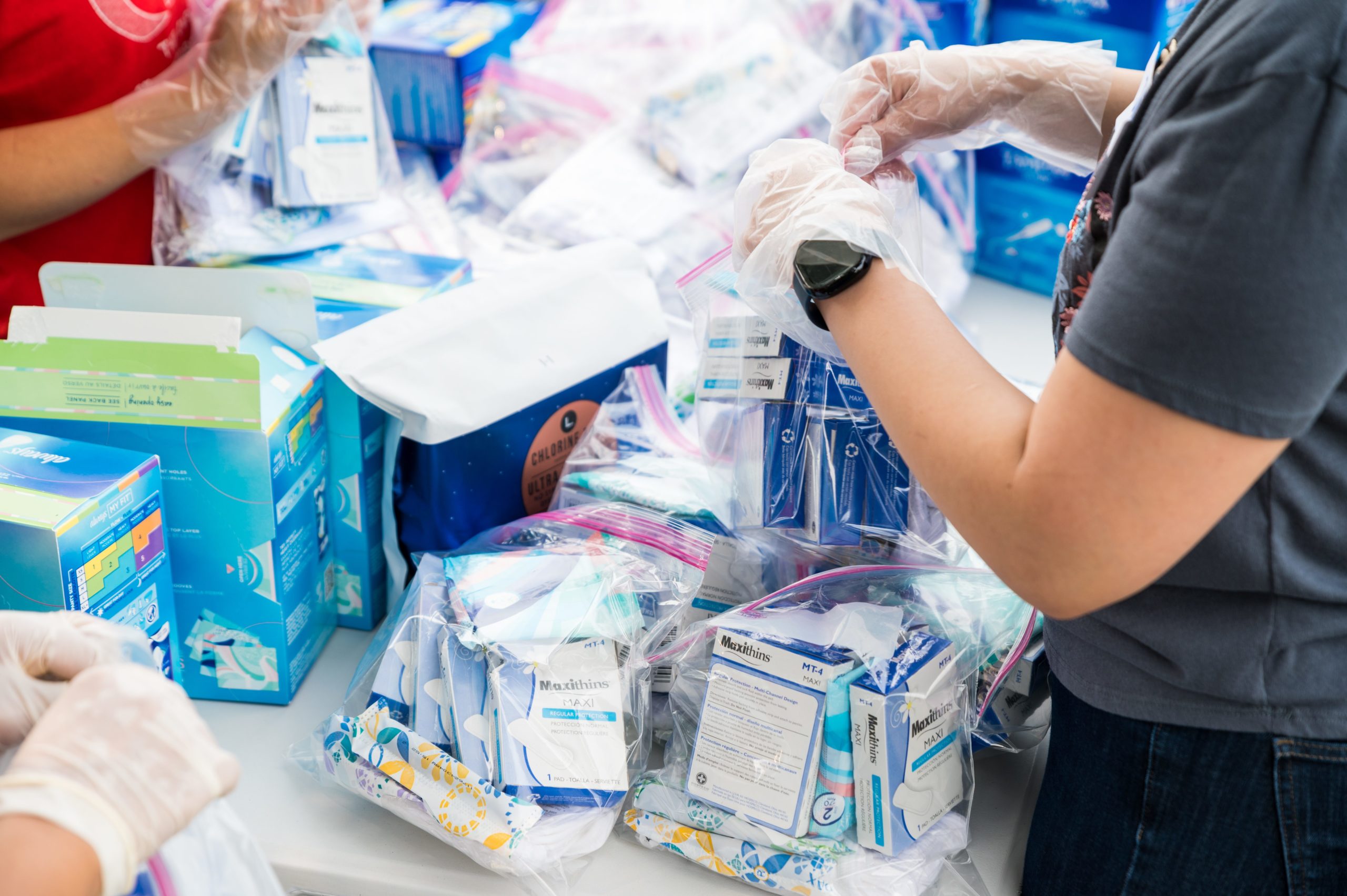Getting married is a big step. Before tying the knot, it’s important to plan ahead…and not just for the wedding. Talk about healthcare. Spouse health insurance laws vary by company, municipality, and state, so weigh your options accordingly. As a couple, it can be difficult to determine the best direction in your new journey. That’s why we’re here to provide guidance and resources.
First things first: are you even comfortable with the same policy? Talk it over and do some research. If you are both in good health, a family plan is cost-effective. For spouses with chronic health issues, lower deductible plans might be worth researching.
United Way NCA advocates for the health and wellness of every person in the community. Keep reading to learn more about health insurance for couples.
Spousal Health Insurance Plans
As a qualifying life event, marriage permits health insurance policy changes within 30 days. Outside of this time frame, open enrollment periods happen once a year. If you miss the deadline, you and your partner must wait. Good news: there are plenty of private insurance options to contemplate.
While U.S. employers are not required to provide spousal health insurance plans, most do. Some companies permit coverage only if the spouse does not have access to their own employer insurance. Across the country, benefits vary by company, precinct, and state. In 2021, the average total premiums for family coverage under employer-sponsored plans reached $22,221, with employers covering an average of 73% of the final cost.
Insurance companies are not allowed to discriminate against same-sex relationships. However, the benefits of heterosexual marriage were not available to same-sex couples until the Supreme Court legalized gay marriage in 2015. Now, as long as a couple is married in a legal jurisdiction, the same coverage must be offered regardless of:
- Where a couple lives
- Where the insurance company is located
- How the plan is sold, issued, renewed, or in effect
If you are denied coverage, start by asking the company why. Specific reasons will help to file an appeal. Find more advice on navigating health insurance coverage for couples in same-sex marriages.
Less stress, more research. Do the math. The cost of two plans might amount to less than either job. At the same time, it’s important to review your existing health insurance features. Couples can also be subject to a “spousal surcharge,” in which employers charge more for family plans. Consider your current health status along with the following factors:
- Number of Annual Doctor’s Visits
- Regular Prescription Medications
- Specialist Visits [Dental, Vision]
- Monthly Premiums
- Out–of–Pocket Costs
- Medical History
- Dependents
- Family Planning
Diving deeper, what are specific health insurance options to consider?
Employee–Sponsored Health Insurance for Couples
Joint plans might be attractive to couples who can easily reach deductibles when both expenses count toward one amount. Roughly half of Americans sustain health insurance through employer-sponsored plans. If both spouses work for companies that offer coverage, they can stay on individual plans.
Cost varies when adding a spouse to health insurance. Be sure to weigh the pros and cons, like whether the plan covers any pre-existing conditions. Reach out to human resources with questions.
Separate Coverage
Spouses do not have to be on the same insurance plan. Going back to 2010, the Affordable Care Act (ACA) introduced a world of new options to many Americans that either paid for expensive, insufficient health insurance or were excluded from the system entirely.
Here are add–ons to think about:
Government–Sponsored
Once a person turns 65 years old, they are eligible for Medicare. Coverage is individual, even if both spouses are both of age. Partners can stay on private insurance if one spouse qualifies for government–sponsored health insurance.
Same-Sex Spousal Coverage
Employers have significantly adjusted benefit plans since the Supreme Court legalized same-sex marriage in 2015. The Affordable Care Act denotes that married same-sex couples enjoy the same tax credits and lower out–of–pocket costs as heterosexual couples, as long as joint tax returns and income limits are applied. Public marketplace health insurance options are also equal to opposite-sex spouses.
Domestic Partnership Health Insurance Plans
Domestic partnerships are not formally recognized by federal law, so each state follows its own definition. In granting domestic partner coverage, insurance providers or employers acknowledge these relationships and provide the same health insurance benefits as married couples. There are no universal qualifications. Dependent coverage usually includes biological children, step-children, and legally adopted children. Employers may impose a waiting period from the time of application of six months to a year before the health coverage can begin.
In states that recognize domestic partnerships, qualifications come down to meeting the outlined requirements and providing adequate proof, such as the marriage license, joint credit card or bank bills, or license to prove a shared residence.
Frequently Asked Questions
Does Getting Married Affect Health Insurance?
Yes, getting married affects health insurance. In fact, access to a family health insurance plan is a major benefit of marriage. There are multiple options available to newlyweds within the federal, state, private, and health insurance marketplace.
Should You and Your Spouse Have Separate Health Insurance Plans?
It’s up to you! While most spouses are covered under the same plan, health insurance for couples is situation-dependent. Find the plan that works best for your family. There are many factors to consider, from pre-existing medical conditions to the need for extensive provider networks. Health savings accounts may also be of interest, but can only be solely owned.
Is It Less Expensive to Combine Health Insurance with Your Spouse or Partner?
Yes. When it comes to health insurance for couples, the most affordable option is typically employer-sponsored. That said, every company (and couple) is different, so take time to understand your choices before consolidating plans.
How Can You Add Your Spouse or Partner to Your Health Insurance Plan?
Adding your spouse to health insurance is not difficult, but timeliness is everything. The process must be initiated within 30 days of marriage. Depending on the circumstance, choices may include consolidation, adding your spouse to an existing plan, or registering in the health insurance marketplace. Keep reading for a closer look into each path.
Option 1: Consolidate Health Insurance
- Understand what consolidating health insurance really means.
Extra premiums are usually involved, so talk to both employers.
- Be smart when comparing plans.
There are many factors to consider, such as out–of–pocket expenses of each plan; levels and types of services offered; and coverage for children, if applicable.
- Differentiate out–of–pocket costs between plans.
These costs are not covered by the plan or employer, so ultimately, you are responsible. Every plan has additional expenses to consider, including premiums, deductibles, plan maximums, co-payments, and spousal surcharges for consolidation.
- Review levels of coverage.
Don’t forget to get into the nitty-gritty. Costs are important, but consider the actual coverage offered. One might be more expensive or limit medications and services to certain plans. If having children is in the future, keep family planning in mind. Take into account pregnancy and maternity items covered by both plans.
Option 2: Add Your Spouse to an Existing Employer Health Insurance Plan
- Research and know your rights.
Explore specific plan details and talk to human resources. Note the special time window to submit the change. If you miss this period, you must wait a year until the next annual enrollment period.
- Keep required documentation handy.
Review the employer and health insurance company’s requirements for making enrollment changes. Gather all the required documentation and submit it for processing.
- Take note of coverage start date.
Coverage does not take effect immediately but rather on the first day of the month following notification to your employer.
Option 3: Register for the Health Insurance Marketplace
- Figure out if you qualify.
The Health Insurance Marketplace is where you can sign up for health insurance individually.
- Add your spouse during the open enrollment period.
This period typically starts on November 1st of every year. Don’t miss it! A qualifying life event must occur to add your spouse outside of the open enrollment period.
How to Advocate for Health and Wellness in Your Community
United Way Worldwide advances the common good by creating opportunities for all. Our focus is on education, income, and health—the building blocks for a good quality of life and a strong community. To understand open enrollment for health insurance, visit this site. Additional information on copays, coinsurance, and deductibles is also available. For a step–by–step guide, click here.




